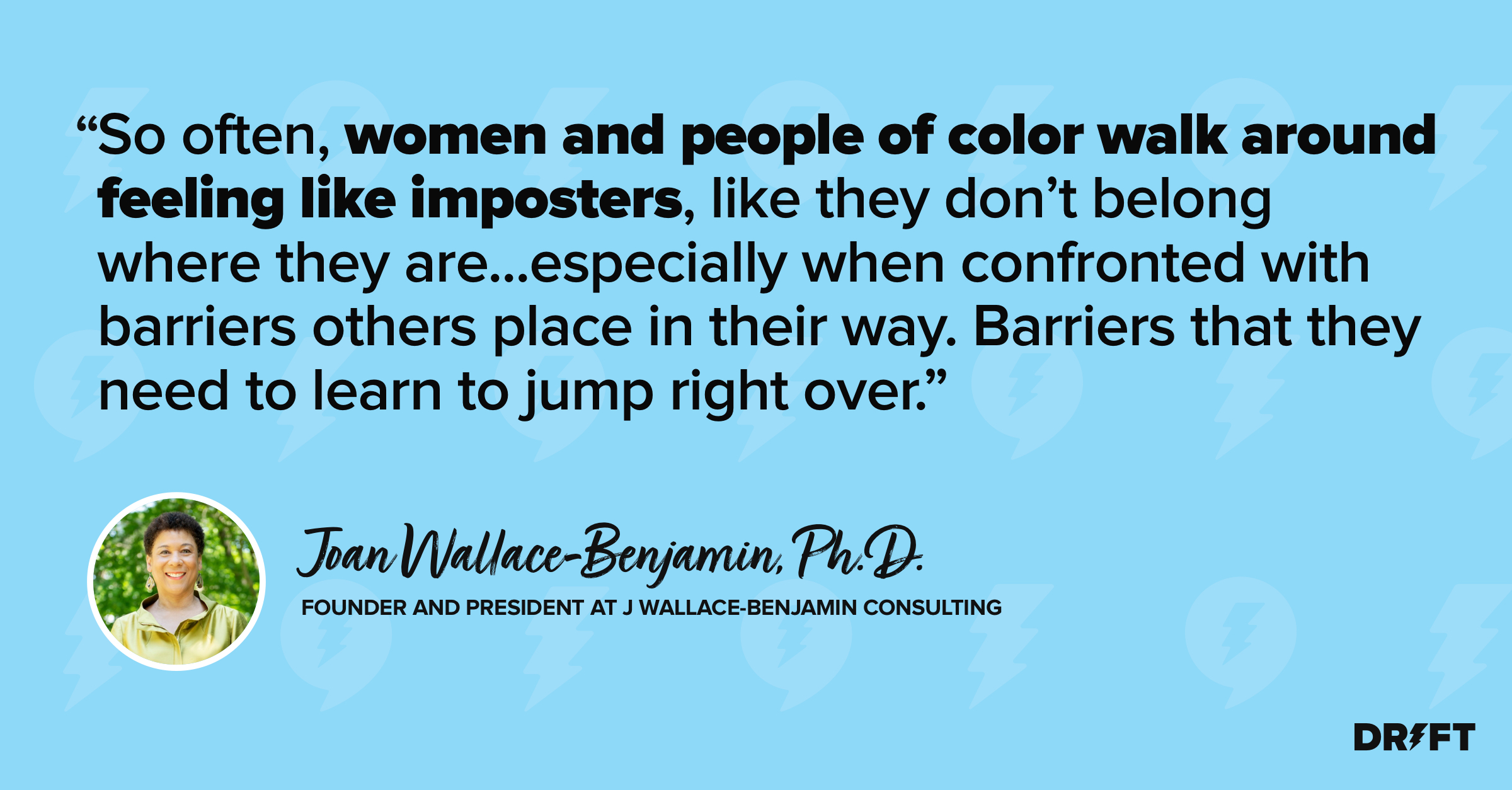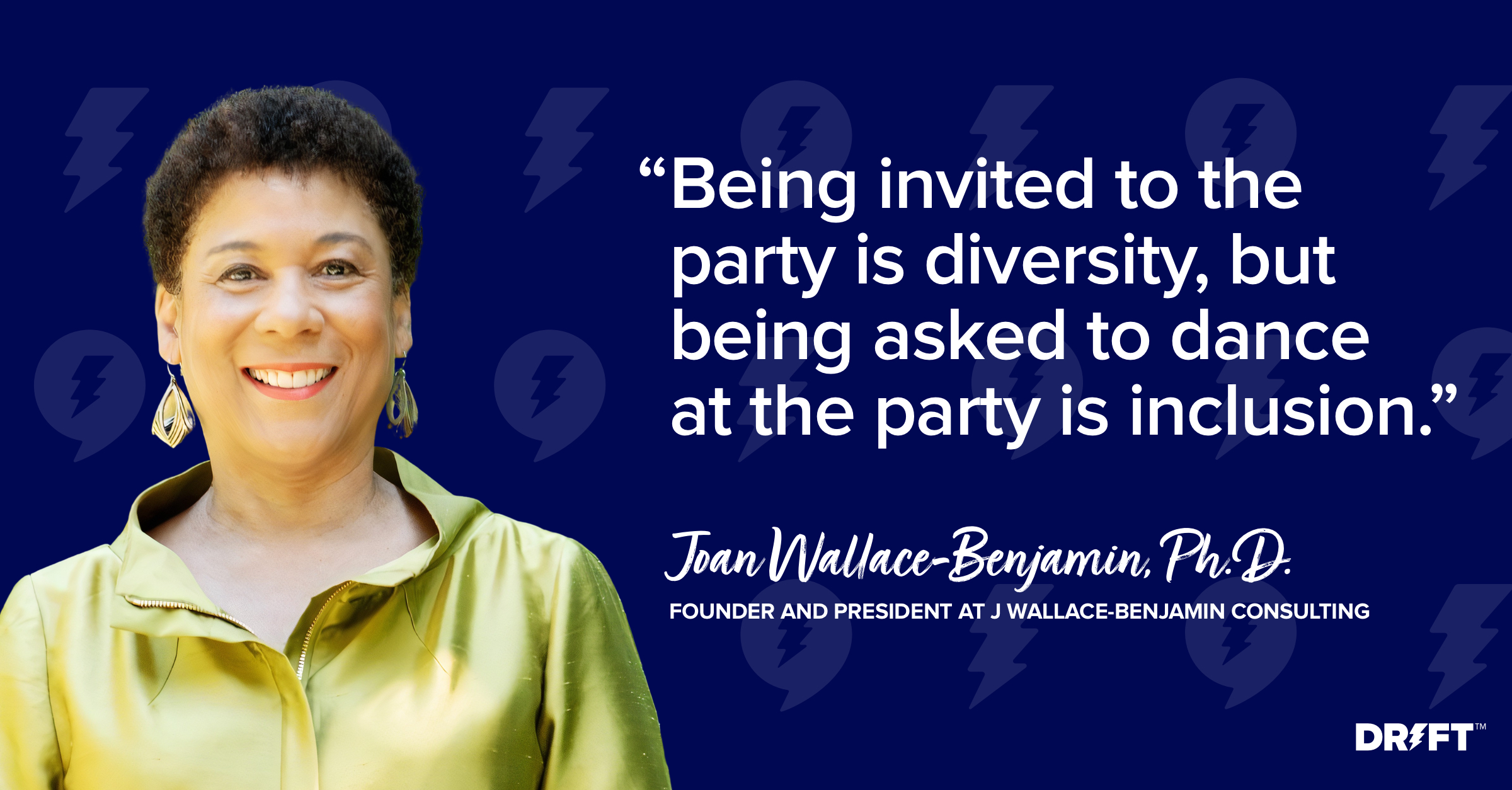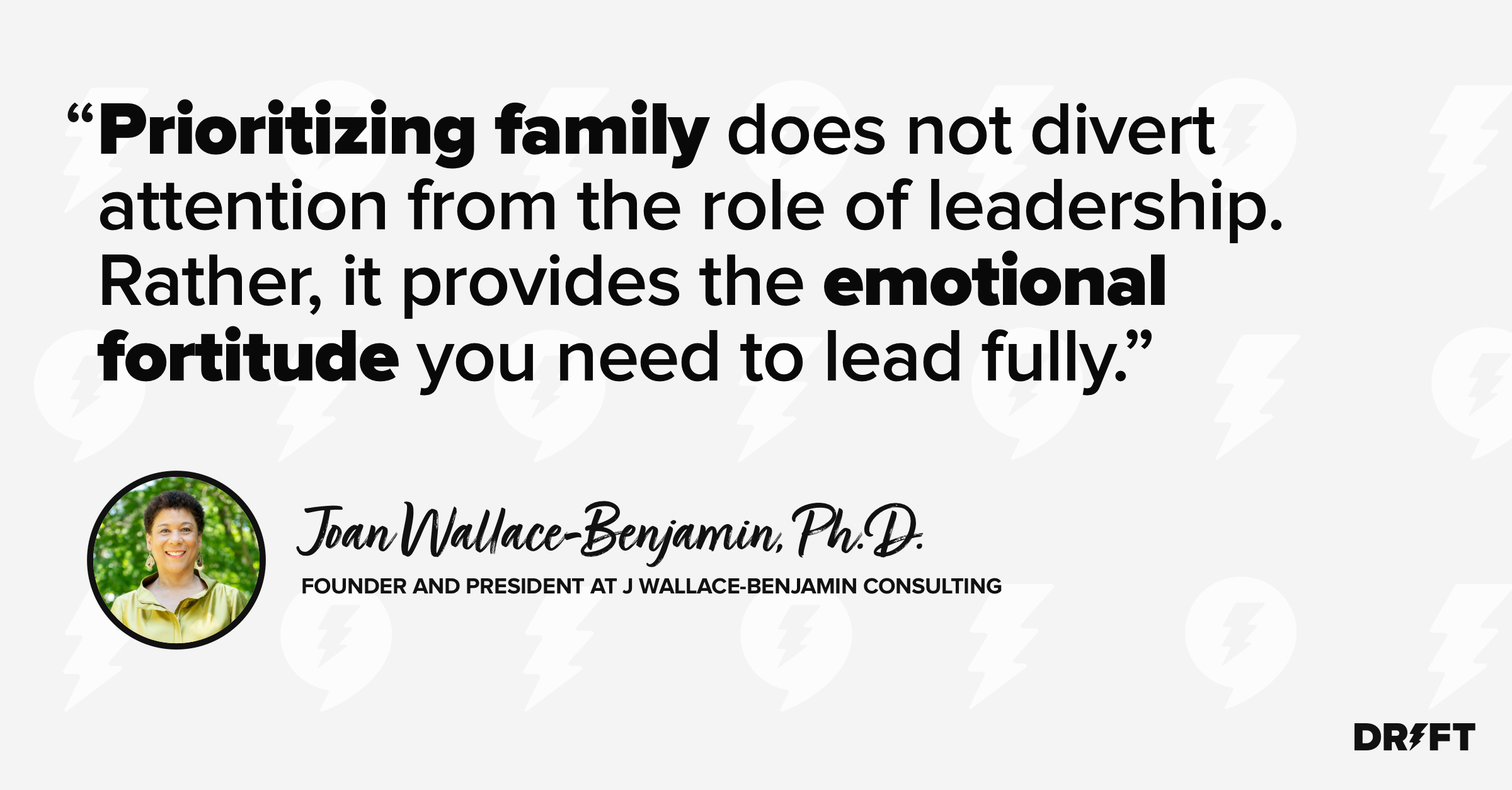Joan Wallace-Benjamin has spent most of her career in the C-suite.
She was president and CEO of the Urban League of Eastern Massachusetts for 11 years – a nonprofit dedicated to helping adults overcome social and racial inequities to gain employment and economic empowerment.
She then worked as a consultant for the executive recruiting firm Whitehead Mann before moving back into the human services sector – joining The Home for Little Wanderers in 2003 as their president and CEO. It’s a role that she would have for 15 years until her retirement (taking only a brief leave of absence to serve as the Chief of Staff for former Governor of Massachusetts, Deval Patrick).
All this to say: Joan Wallace-Benjamin knows the ins-and-outs of what it takes to run an organization – and how to succeed as a leader.
Cultivate confidence and a strong sense of self
Joan Wallace-Benjamin often fields questions about leadership – is there a leadership gene? Do some people have this innate disposition toward taking action? For Wallace-Benjamin, it’s not that simple. Leadership qualities can, and often need to be, cultivated.
It begins with confidence (not to be confused with cockiness).
“You must be brave, be bold, speak up, and step up if asked to lead or participate in an initiative at your company or organization…being self-effacing and shrinking back doesn’t get you anywhere. It really doesn’t.”

For Wallace-Benjamin, she says the people that were fearless were the ones that always caught her attention. They may not have known with 100% certainty if their idea would work, but they were willing to try. And that’s the mark of a leader – this inclination toward action. Because the truth is: sometimes your idea won’t work. But in her view, failure can provide great feedback.
And successful leaders are willing to keep learning – they don’t allow self-doubt to cloud their judgment. As Wallace-Benjamin notes, “For me, a strong executive presence comes from being prepared, knowing your stuff, appearing calm, and sporting a smile even when you are uncomfortable. Never let them see you sweat, and it’s best when you’re actually not sweating. Instead, you are prepared. Authenticity is key.”
But even with preparation, and pushing yourself to be bold in the workplace, it can be hard to sidestep a sense of imposter syndrome.
“So often, women and people of color walk around feeling like imposters, like they don’t belong where they are…especially when confronted with barriers others place in their way. Barriers that they need to learn to jump right over.”

That’s easier said than done, especially when operating within systems that were built to favor some over others. But this is where confidence – and a strong sense of self – come into play. Knowing that: I worked hard to be here, and I deserve to be here. It’s having that tenacity to persist, even when you’re feeling uncertain.
“I wish I had a dollar for every time, over my 37-year career, that I walked into a room in which I was the only woman, and even more frequently, when I was the only person of color,” Wallace-Benjamin reflects. “But over time, I refused to let a preoccupation with behavior that I could not change, or had no reflection on me, expend my emotional and intellectual energy.”
Diversity is more than just extending an invitation – it’s inclusion
Everyone has a unique point of view. And for Joan Wallace-Benjamin, it’s vital to recognize the ways in which your identity and experiences impact the way you confront data, assess situations, and chart a course of action. As Wallace-Benjamin puts it, “All of the incidents in your life have both a conscious and subliminal impact on what you think and believe.”
This is just one of the reasons that diversity in the workplace is so vital: it helps break past the limitations of our singular viewpoints. “Good leaders do not have to possess every necessary attribute. Instead, they know how to build the diverse, talented, and skilled teams that are so important to an organization’s success.”
When Wallace-Benjamin joined The Home for Little Wanderers, there was a lack of diversity in upper and executive management – a dynamic she worked to dismantle. In her words, “being invited to the party is diversity, but being asked to dance at the party is inclusion.”

To be a truly diverse and inclusive workspace, there needs to be diversity at every tier in the organization.
And now more than ever, people are calling out the empty promises of diversity. This past year put a spotlight on the racial and social injustices that have long been ingrained in this country, making them impossible to ignore. And businesses need to hold themselves accountable for how they’re ensuring a safe and equitable work environment for every employee.
To do this, leaders need to do more than just point to an initiative. They need to have a plan of action, and be honest about what needs to change. “People, and particularly people of color, are coming back to the workplace much more impatient than they were before George Floyd. They’re much less willing to listen to a lot of talk… They want to see some things change.”
And while certain policy changes may take more time than others, there are immediate steps an organization can take – whether it’s acknowledging microaggressions that have slipped into the workplace or inequitable hiring practices.
Balancing your personal and professional life
There’s a Congolese saying, “a single bracelet does not jingle.”
It’s easy to think of leaders as lone figures, forging their own path. It feeds into this mentality that to be successful in your career, you need to make sacrifices in your personal life.
But Joan Wallace-Benjamin warns that this type of thinking is a mistake.
“Prioritizing family does not divert attention from the role of leadership. Rather, it provides the emotional fortitude you need to lead fully.” Whether it’s family or friends, it’s important to invest in these personal relationships. These are the people that will offer their support, and their honesty – making for a stronger and more empathetic leader.

And this emphasis on balancing professional and personal relationships strengthens the commitment your colleagues have to the organization. It builds trust, rather than promoting burnout.
In Wallace-Benjamin’s experience, “When leaders recognize and support their employees’ responsibilities for their own families, and create a work culture that acknowledges their need for balance too, I found that my team and my workforce would walk across hot coals for me.”
Looking ahead
Even after 37 years in leadership, and 27 years of being a CEO, Joan Wallace-Benjamin shares a secret: “You never want it to get too easy…You should always have a little knot in your stomach. That adrenaline is what keeps you sharp.”

So often, we try to find a common denominator between successful leaders. They all rise before dawn, read constantly, have five-minute meetings, and so on…but Joan Wallace-Benjamin reminds us that one of our greatest strengths is our unique experiences. It’s how our upbringing, heritage, and families have shaped who we are. And of course, it’s persistence and preparation, too.








